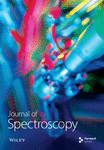Aggregation and properties of α‒synuclein and related proteins
Abstract
α-Synuclein has been identified as a component of intracellular fibrillar protein deposits in several neurodegenerative diseases, and two mutant forms have been associated with early onset Parkinson′s disease. A fragment of α-synuclein has also been identified as the non-Aβ component of Alzheimer′s disease amyloid (NAC). Ageing solutions of α-synuclein and NAC leads to formation of β-sheet, detectable by circular dichroism spectroscopy, and aggregation to form amyloid-like fibrils, detectable by electron microscopy. Differences in the rates of aggregation of the fibrils formed by α-synuclein and the two mutant proteins are presented. The toxicity of α-synuclein and related peptides towards neurons is also discussing in relation to the aetiology of neurodegenerative diseases.
Experiments on fragments of NAC have enabled the region of NAC responsible for its aggregation and toxicity to be identified.




